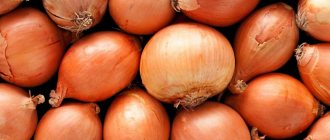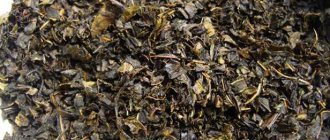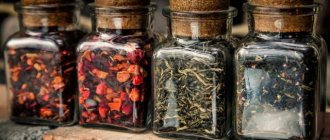A cup of invigorating, aromatic grain coffee - few people can refuse such pleasure. Coffee has long been one of the most popular tonic drinks all over the world, and most gourmets prefer a natural drink, and to obtain a truly tasty drink you need raw materials suitable for its preparation - coffee beans.
Nowadays, getting grains is not a problem; they are sold in almost every grocery store, but many, purchasing goods on sale or in large containers for a long period, are wondering how to properly store the product at home so that the prepared drink does not lose quality. There is a lot of advice on this matter, so let’s try, by collecting and analyzing information from professionals, to answer the most popular questions of lovers of natural coffee prepared with our own hands.
General storage rules
The taste of coffee largely depends on the storage location, since if it is not stored correctly, it will weather and lose its aroma. If you store whole grains in a damp place, they will absorb moisture and the taste of the invigorating drink will change.
How and in what to store ground coffee
After grinding, coffee becomes more vulnerable to the external environment and easily loses its quality if storage rules are not followed. The main condition is container. It should close tightly and be opaque, since exposure to direct sunlight or lamp rays will negatively affect the consistency. Store the jar in dry places, away from the stove and sink.
How and in what to store coffee beans
Store beans in sealed jars, as roasted seeds quickly lose flavor when exposed to air. The jar should be hidden in a dark, but not damp place, since a thin film may appear on the grains. The taste of the drink will then become sour and bitter.
Coffee absorbs foreign odors well, so when storing it in the refrigerator, the jar should always be tightly closed.
How and in what to store coffee capsules
The capsules' warranty from the manufacturer is 2 years, but only with proper storage, namely:
- do not leave capsules in the sun;
- do not open the package in advance;
- Do not store in the refrigerator, as condensation will accumulate inside the package;
- Do not make holes in the packaging yourself, the machine will do it itself.
When purchasing capsules, carefully inspect the packaging for leaks.
How and in what to store coffee grounds
Coffee pulp is used as a fertilizer or facial scrub. It is best used fresh, but it can also be dried. The healing properties will become a little weaker, but the effect will not disappear.
First, we dry it, take paper and spread the cake around the entire perimeter so that there are no accumulations, otherwise mold will form.
The average drying time will take 2-3 days, but it needs to be stirred regularly. Store dried pulp in a closed glass or ceramic jar without direct exposure to rays and moisture.
How and in what to store instant coffee
Instant coffee is not as valued as ground or bean coffee, but it is the most common type of drink in Russia. Its aroma is not so rich, so in order to preserve the already weak smell, you need to adhere to special storage rules.
Regardless of packaging, instant coffee can be stored without loss of quality for up to 5 years, but after opening the shelf life is reduced to 6 months. To prevent the drink from losing its taste, we follow the rules:
- do not store in the refrigerator;
- do not allow direct sunlight;
- after use, close the container tightly;
- In the case of soft packaging, it is recommended to use foil as a lid.
If instant coffee becomes less aromatic, add a cinnamon branch to the jar. It will enhance the smell, but not for long.
How to store freeze-dried coffee
Freeze-dried coffee is similar to instant coffee, but it is richer and more flavorful because it is made from higher quality beans. Essentially, these are the same beans, only crushed, so we use the same storage method as for whole beans. We hide it from direct sunlight and lamp rays, keep the packaging completely sealed and do not leave it open.
Jar
The preferred jar material is glass, clay, ceramics. The jar should have a tight-fitting lid (with a silicone layer) that will prevent the penetration of moisture and air. Prefer jars with opaque walls to protect the product from light.
Storing coffee in airtight containers has a number of disadvantages compared to special bags.
- Immediately after roasting, gases form in the beans, so it is best to wait a couple of days before placing the roasted product in a jar.
- After closing the lid, air and trapped moisture remain in the jar, which contribute to the occurrence of oxidation processes.
- Transparent glass allows light to pass through; it is better to wrap such a jar in thick material.
Experts strongly advise against using plastic containers (jars or containers) for three reasons. Firstly, the material has a specific odor that is quickly absorbed by the grains. Secondly, the containers do not have sufficient tightness (air and moisture will get inside). Thirdly, they have transparent walls that do not protect the product from light rays.
Recommended: 10 things you shouldn't keep in your wallet: you have at least half of them
Where to store coffee
To prevent coffee from losing its taste, you must strictly follow the storage rules, otherwise the taste will resemble a cheap coffee drink.
Can coffee be stored in the refrigerator?
The refrigerator cannot be considered a good place to store coffee, for several reasons:
- condensation collects in foil packages and glass containers;
- if coffee absorbs moisture, it will no longer be possible to extract it;
- in addition to moisture, the drink absorbs foreign odors well, of which there is plenty in the refrigerator;
- To increase the shelf life of coffee, you will need an air temperature of -40 degrees or more, which the refrigerator does not have.
With frequent temperature changes, coffee will be compacted in the packaging, creating lumps and losing its aesthetic appearance.
Can grains be stored in the freezer?
According to experts, the best coffee comes from fresh, recently roasted beans. However, freezing has its advantages.
When grains are stored at a temperature of -50 degrees and below, the grains retain their taste, and after defrosting and using, their taste not only intensifies. Frozen grains have been shown to create a more balanced flavor, indicating less use per serving.
Good freezing qualities only apply to very low temperatures, and the freezer compartment of a household refrigerator is not able to improve this effect.
Where to store ground coffee in an open pack
The best place would be the kitchen cabinet, but various spices and seasonings should not be near the open packaging, otherwise the coffee will absorb all the assorted ingredients. There should be no stove or sink nearby, as the steam from the hot water will transfer moisture to the ground grains. Make sure that direct sunlight does not fall on the pack of coffee.
Is it possible to store coffee in a can?
It all depends on the tightness of the can itself. Not all metal containers can close tightly, and to lose the aroma you only need a micro-crack. At the same time, the tin can can easily become deformed, and this is another step towards loss of taste. But tin also has its advantages. It does not let the sun's rays through and, with good sealing, perfectly retains the aroma.
Adviсe
Preparing an aromatic drink from ground coffee beans also has its secrets. The main rule when preparing coffee in a Turk or by brewing in a coffee pot is to use suitable water in the recipe. For cooking, it is better to use bottled or filtered liquid - such water is softer, so it will reveal more of the aroma. Coffee lovers also recommend following a number of standards:
- It is better to choose brown sugar for the drink - it will only emphasize the taste of the drink. A separate advantage of this choice is the reduced calorie content.
- When adding spices during the coffee brewing process, it is recommended to add a small pinch of salt. This mineral will extinguish excess bitterness if the amount of cinnamon or pepper is exceeded.
- The drink must be prepared in small, strictly dosed quantities, since over time, brewed coffee loses its aroma and taste. You can fully enjoy its qualities for about 1 hour.
For reference!
It is better to grind the grains immediately before preparing the drink, instead of storing them for a long time.
To reveal the aroma when brewing coffee according to the norms, the ground beans must be added first, and then filled with cold water. If sugar is added to the drink, then it is correct to add it to the cezve, along with the powder - this way the aroma and foam on the surface of the cup will be preserved to the utmost. You need to adjust the strength of the drink by the duration of cooking on the stove, and not by the amount of ground grain.
How long does coffee last?
The shelf life depends on the location and type of the drink itself. If you are in places with open rays or high moisture, coffee will quickly lose its quality. If the storage location is used under all conditions, then the period will depend on the degree of grinding and the type of grains.
Shelf life of coffee in unopened packaging
It should be understood that expiration date and shelf life are slightly different concepts. The expiration date indicates the period of preservation of all the qualities of the drink, but the shelf life indicates the time for use, and if it passes, the product will need to be thrown away.
Instant coffee has the longest shelf life - up to 5 years, followed by capsule type - up to 2 years, whole or ground beans - up to six months. After opening the package, a new storage period begins, which is significantly reduced.
Shelf life of unroasted coffee
In the storage category, unroasted coffee is superior to heat-processed beans because its shelf life is significantly longer. Whole raw coffee beans often last up to 1 year, and some varieties last up to three years. In five years they may not disappear, but they will lose their taste.
Before purchasing, read the packing date on the packaging - it will indicate the exact time of collection. When buying green coffee beans by weight, pay attention to their appearance, this will allow you to approximately know their age:
- the grains must be whole, without a large number of chips;
- the outer shell should be velvety and uniform, without any special shades;
- the smell should not be too rich, but on the contrary, with herbal undertones.
If the grains differ in appearance, it means they were collected at different times, and accordingly their quality will be low.
Shelf life of roasted coffee beans
Roasted grains are inferior in terms of time to green ones, so to maximize the preservation of taste, observe the required conditions. Most often, roasted coffee is stored in three types:
- Unsealed container. A simple and practical way to store small quantities of grains. The maximum shelf life is 14 days.
- Sealed paper bags. Subject to the rules of absence of moisture, direct sunlight and sealing, the maximum shelf life will be 6 months.
- Heat sealable container. These bags are designed for storing coffee beans. They are equipped with special filters for removing gases; in addition to their high tightness, the shelf life reaches 1 year.
How long can coffee beans be stored in an open package?
Once the package is opened, the shelf life is significantly reduced. When exposed to air, roasted grains quickly lose their taste, so it is recommended to use them within 14 days. You can extend their storage by 3-5 days by pre-portioning them in an airtight container.
Average shelf life of coffee beans
There are established shelf life periods for coffee, which must be followed despite the manufacturer’s statements:
- green grains – up to 1 year;
- roasted grains after opening – up to 14 days;
- in vacuum packaging – one and a half years;
- in a tight sealed container - up to 1 year.
The above average periods are achieved only if storage rules are observed.
Shelf life of green coffee beans
Green coffee is often purchased in large quantities as it can keep its quality for about 12 months. When purchasing in closed bags, the date of packaging will be indicated, but when purchased in bulk, you will have to independently determine the quality and age of the grains.
Fresh green seeds have a herbaceous smell and velvety color, without a film. They should feel loose and easy to break to the touch. However, the main indicator is one color, since grains of different shades indicate different ages. Their lifespan will be shorter and, accordingly, the aroma and taste will be weaker.
How long can coffee beans be stored in a glass jar?
When pouring grains into a glass jar, there will be an interaction with oxygen that cannot be prevented. Gases will disappear from fresh beans after roasting, which is a good indicator, but interaction with oxygen will start the oxidation process and, over time, the taste will change for the worse.
The shelf life in a glass jar is practically no different from other packaging, the main thing is that it is not exposed to the sun's rays. It should also not be placed in the refrigerator due to condensation.
How long does coffee last in a thermos?
The shelf life of the aroma and taste of coffee in a thermos depends on the quality of the container itself and its ability to retain heat. The taste will remain until the water cools. You can brew coffee immediately or take boiling water with you and brew each portion separately.
The second option will better reflect the taste of the drink, since it will be freshly brewed, but it is also less practical. As the water cools, the coffee will brew weaker and, accordingly, the taste will become worse. Choose the most profitable option for yourself.
How to store coffee grounds for scrub
It is recommended to use coffee grounds immediately, until they are fully saturated with all qualities. If you don’t have this option, then put it in a jar and put it in the refrigerator. The recommended period of use is up to 7 days, otherwise there will be a weak effect. Alternatively, it can be tightly sealed and placed in the freezer. In this case, the shelf life will increase four times, but you should not keep the coffee scrub in the freezer.
You can dry the grounds and later use them as tinctures, combining them with beneficial herbs.
Coffee has never lost its popularity, and judging by its variety of uses, it is only gaining it. In Russia, the most common type of coffee is instant coffee, made from low-grade beans. Its storage conditions are less strict, but the taste is far from true.
To experience the real aroma of an invigorating drink, take freshly roasted beans, process them in a coffee grinder and make coffee, after which you will definitely not want to go back to instant.










